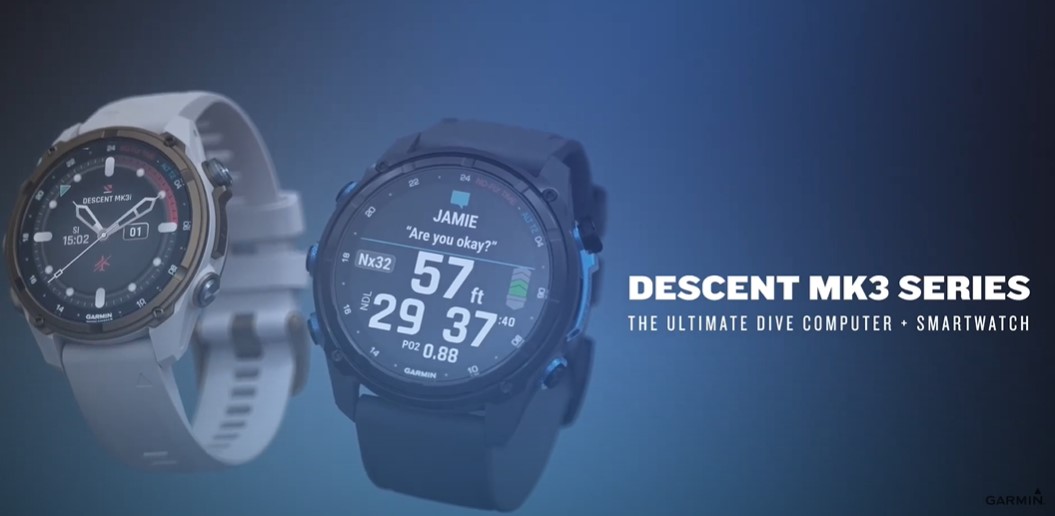Garmin released a Descent dive computer featuring air integration. The previous model lacked this feature, leading to debates among divers about its necessity. Some argue that it’s a waste of money and an additional point of failure, while others see it as a valuable enhancement. So, what’s the fuss about air integration versus the traditional Submersible Pressure Gauge (SPG)?
Let’s dive into the discussion.
Air Integration Benefits
Convenience and Efficiency
Air integration provides real-time monitoring of your tank pressure directly on your dive computer. This convenience means you can keep track of your air supply without needing to glance at a separate gauge, allowing you to focus more on your surroundings and dive plan.

Accurate Air Consumption Data
An integrated system can give you precise readings of your air consumption rate, or Surface Air Consumption (SAC) rate. This feature helps divers plan their dives more efficiently, adjusting for different conditions and improving overall safety. For example, on a rebreather, having your O2 and diluent pressures displayed on one screen is invaluable.
Streamlined Dive Profile
By eliminating the need for an SPG, you can reduce the number of hoses and clutter in your setup. A cleaner configuration can reduce drag and make for a more streamlined and enjoyable dive experience.

Arguments Against Air Integration :
Potential for Failure
Critics point out that air integration adds another potential point of failure. If the transmitter fails or the battery dies, you lose your primary means of monitoring air supply. This concern leads many divers to insist on carrying an SPG as a backup, ensuring that they can always check their air supply.
Cost Considerations
Air-integrated systems are more expensive than traditional SPGs. A basic SPG is a simple, reliable, and cost-effective solution that has been used for decades. For divers on a budget, the additional expense of air integration may not be justifiable.
Battery Dependency
Air integration systems rely on batteries, which introduces another maintenance task. Regular checks and replacements are necessary to ensure the system functions properly. Divers must be vigilant about battery levels to avoid being caught without a working air supply indicator.
Dive Talk Top Scuba Influencers Opinions

Doug’s Perspective
Doug uses both air-integrated and non-air-integrated computers but always carries an SPG as a backup. He appreciates the convenience of air integration for recreational dives, as it calculates the SAC rate and provides easy visibility. However, he emphasizes the importance of having an SPG as a fail-safe, especially for critical gas supply monitoring.
Ben’s Take
Ben is a strong advocate for air integration, particularly for rebreather diving where he monitors both O2 and diluent pressures. He finds the ability to see both pressures on one screen immensely valuable. For new divers, he acknowledges that an SPG coupled with a reliable dive computer like the Shearwater Peregrine suffices, but he personally prefers the integrated approach.
Gus’ Approach
Gus dives with multiple computers and relies on air integration. He uses a button SPG on his first stage to verify tank pressure when setting up but doesn’t regularly monitor it during recreational dives. For technical dives, especially on rebreathers, he maintains an SPG on his diluent tank but relies on transmitters for continuous monitoring. He feels the reliability of modern transmitters justifies not carrying an SPG in some cases.
The debate between air integration and SPGs boils down to personal preference, diving style, and risk tolerance. Air integration offers convenience, efficiency, and accurate data, enhancing the diving experience for many. However, the potential for failure and additional cost keeps many divers attached to the reliability of an SPG.
For recreational divers, air integration can simplify the dive and provide useful data. However, always carrying an SPG as a backup is prudent. For technical diving, especially in overhead environments or decompression dives, the redundancy of an SPG remains essential.
Ultimately, the choice between air integration and SPGs should consider individual needs, diving conditions, and comfort levels. Divers should weigh the benefits of modern technology against the reliability and simplicity of traditional methods to make an informed decision that enhances their safety and enjoyment underwater.

